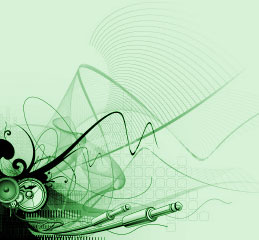A C O U S T I C S C O N S U L T I N G
“Acoustics” is commonly but only partly correctly understood to mean sound-proofing. While this is one aspect it is not the whole. A room needs to be isolated (sound-proofed) from its surrounding areas as well as acoustically treated internally in order that the subjective quality of sound within the room meets the required specification.
This applies to spaces utilized in diverse fields such as recording studios, auditoriums, broadcast studios, video post-production rooms, clubs/bars/lounges/discos, cinema theatres, conference/board rooms, offices and even classrooms.
1. Acoustical Design and Specification
A given room layout requires proper acoustic treatment in order to achieve the desired level of sound quality. Frequently, video edit rooms, conference rooms, board rooms, classrooms etc. are built without any acoustical consideration at all. It is only at a much later time that issues such as lack of speech clarity, excessive reverberation, slap echo, flutter, etc. become apparent. It then becomes necessary to apply some acoustical treatment in order to overcome these problems. All this contributes to additional cost as well as great inconvenience to all concerned.
Use of room acoustics modeling computer software arms us with the capability to create simulations of the rooms that require treatment. These simulations are the starting point from which prediction of acoustical room response and treatment can be begun.
We provide the necessary designs and specifications for the treatment of the room which include the use of absorptive and reflective surfaces, sound barriers, bass traps, membrane absorbers etc. as necessary. This is arrived at through theoretical calculation as well as implementation.
2. Custom Acoustical Devices
Often it is not possible to achieve a desired acoustical effect through the use of standard off-the-shelf products. In such cases we are able to design and build the necessary custom device that will tackle the issue at hand.
3. Calibration
It is desirable to achieve the specified acoustical quality solely by the use of appropriate acoustical solutions. In practice, this is not always achievable. At such times the use of electronic devices becomes necessary in order to fine tune the acoustical response. This involves calibration of the various equipment that have a direct bearing on the nature of the room acoustics.
This is achieved by employing high quality computer based software and hardware that use methods such as room impulse measurement as well as real-time analysis as necessary.
| 

